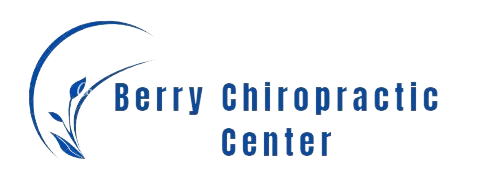Degenerative Disc Disease (DDD) prompts many to consider alternative treatments. Chiropractic care, a non-invasive method prioritizing spinal alignment and intrinsic healing, is one option. So, does chiropractic help manage DDD? Scientific research and anecdotal evidence suggest potential benefits, making it an area for further study.
Understanding Degenerative Disc Disease
Degenerative disc disease refers to the natural aging process of spinal discs, leading to their shrinkage or tears. These discs, acting as gel-like shock absorbers between the vertebrae, maintain spinal flexibility. Disease progression, influenced by factors such as genetics, lifestyle, and injury history, results in reduced function, inflammation, and potential nerve damage. It can cause symptoms from minor discomfort to severe pain, particularly affecting the lower back and neck. Understanding this disease is crucial for exploring treatments like chiropractic care.
Overview of Chiropractic Care
Chiropractic care, a non-surgical treatment rooted in late 19th-century practices, potentially manages degenerative disc disease by focusing on spine manipulation for improved health. Recognizing the spine and nervous system’s integral relationship, this holistic discipline aims to restore body balance and boost natural healing abilities.
Designed to alleviate pain, enhance function, and promote wellness, chiropractic care applies controlled force to spinal joints using a hands-on approach, improving mobility and reducing discomfort. Complementary therapies, including rehabilitative exercises and nutritional counseling, form part of the chiropractic care plan.
The cost of chiropractic care varies based on location, practitioner expertise, and condition complexity. Generally, it’s affordable, with many insurance providers covering part of the cost, lowering out-of-pocket expenses. However, patients should review insurance policies and discuss costs with their chiropractor for informed health care decisions.
How Chiropractic Treatments Work
Chiropractic treatments apply precise adjustments for degenerative disc disease, improving spinal alignment and reducing pain. These varied techniques aim to decrease nerve irritation and enhance the body’s self-healing capabilities. For those seeking alternative solutions to manage chronic back pain, exploring non-invasive care for spinal conditions can offer additional benefits. Understanding these methods is crucial due to the potential benefits they provide for patients with this condition.
Understanding Chiropractic Techniques
Chiropractic techniques, tailored for alleviating degenerative disc disease symptoms, are rooted in the principle that the body can self-heal under optimal conditions. Chiropractic education advocates this holistic method, emphasizing spinal adjustments to enhance nervous system function. Techniques like spinal manipulation and mobilization restore spine alignment and movement, minimizing nerve irritation and fostering natural healing. Grasping these procedures, their aim, and implementation illuminates the potential effectiveness of chiropractic care for degenerative disc disease.
Benefits of Chiropractic Care
Chiropractic care for degenerative disc disease provides benefits such as pain relief, mobility enhancement, posture improvement, and overall health augmentation. Its cost-effectiveness results from targeting the problem’s root cause, reducing the need for repeated treatments or surgeries. Insurance providers recognize chiropractic care’s effectiveness, providing coverage and making it accessible. To explore the broader health advantages of chiropractic therapy for spine conditions, visit the Chiropractic Treatment Benefits page. Thus, chiropractic care is a valuable solution for degenerative disc disease.
Chiropractic Adjustments Explained
Chiropractic adjustments, key in chiropractic therapy, are crucial to explore for dealing with degenerative disc disease. These adjustments, their impact on disc disease, and their associated risks and benefits will be thoroughly examined, providing a comprehensive understanding of their role in managing this condition.
Understanding Chiropractic Adjustments
To comprehend chiropractic adjustments’ benefits, particularly for degenerative disc disease, it is crucial to understand its principles and technicalities. Debunking common chiropractic myths and recognizing a chiropractor’s qualifications are also vital.
- Chiropractic Myths Debunked: Chiropractic adjustments aren’t mere ‘cracking’ of the back or neck, but precise manipulations to reduce pain and enhance function.
- Chiropractor Qualifications: Chiropractors, as licensed healthcare professionals, spend extensive years studying anatomy, physiology, and clinical methods.
- The Adjustment: The adjustment in chiropractic involves the application of controlled force to a joint, aimed at improving mobility and alignment.
- Safety and Effectiveness: Adjustments, when conducted by a qualified chiropractor, are typically safe and can effectively manage diverse health issues.
Impacts on Disc Disease
Chiropractic adjustments can impact degenerative disc disease by providing symptomatic relief and potentially slowing the disease progression. It enhances spinal alignment and function, thus contributing to disease prevention. The increased spinal mobility reduces inflammation and improves nervous system function, leading to decreased pain and enhanced overall wellness. Furthermore, it promotes healthier disc metabolism, slowing degeneration and supporting healing. Consequently, chiropractic care is an effective strategy for managing and potentially preventing degenerative disc disease.
Risks and Benefits
Chiropractic adjustments offer benefits for degenerative disc disease, yet potential risks exist. Treatment costs can be high and may not be covered by all insurance plans, increasing out-of-pocket expenses. Physical risks, though rare, include discomfort, headaches, and stroke. The effectiveness of treatments varies, with some patients seeing no significant improvements. This knowledge enables informed decisions regarding chiropractic care for degenerative disc disease.
Potential Benefits of Chiropractic Care
Chiropractic care offers numerous benefits for degenerative disc disease patients, including pain management and enhanced physical function. Despite prevalent myths, a multitude of patient experiences validates the therapeutic potential of this non-invasive method.
The focus of chiropractic care is spine alignment, with the goal of restoring natural structure and function. This can decrease pain and discomfort due to disc degeneration. Moreover, chiropractic adjustments can boost mobility, improving patients’ quality of life.
A detailed analysis of patient experiences indicates benefits like reduced reliance on pain medication, showing the efficacy of chiropractic care in chronic pain management. Patients also report increased flexibility and better posture, contributing to overall wellbeing.
It’s crucial to address chiropractic myths while recognizing treatment efficacy may differ among individuals. Open, informed discussions between patient and chiropractor can lead to a tailored treatment plan, maximizing chiropractic care benefits for degenerative disc disease.
Risks Associated With Chiropractic Treatment
Chiropractic care for degenerative disc disease, though potentially beneficial, carries certain risks.
- Chiropractic controversies: Critics question chiropractic treatment’s safety and effectiveness, citing lack of substantial scientific proof.
- Insurance coverage: Limited insurance coverage for chiropractic treatments often leads to high out-of-pocket costs for patients.
- Injury potential: Serious complications such as herniated disks, nerve compression, or stroke may occur post-cervical spine manipulation, albeit rarely.
- Health conditions: Individuals with osteoporosis, inflammatory arthritis, or on blood-thinning medication may encounter heightened risks with chiropractic care.
These risk factors can guide patients and practitioners in making informed decisions about chiropractic treatments for degenerative disc disease.
Case Studies on Chiropractic and Disc Disease
Chiropractic treatments can potentially alleviate disc disease symptoms, as evident from case studies. A notable report involved a middle-aged patient with severe degenerative disc disease. Post-chiropractic adjustments, the patient reported less pain and enhanced mobility, indicating chiropractic care’s possible role in disc disease management. However, individual treatment responses may differ, and not all patients may experience improvement.
Another case involved a patient experiencing temporary discomfort during initial chiropractic sessions, which subsided later. This case underscores the potential risks and side effects of chiropractic treatments, emphasizing the need for comprehensive assessment before treatment initiation.
Scientific Evidence Supporting Chiropractic
Scientific research supports chiropractic care’s efficacy in managing degenerative disc disease, as multiple studies demonstrate. A 2016 systematic review in Spine journal confirms chiropractic care significantly enhances pain relief and function. Further evidence from the Journal of Manipulative and Physiological Therapeutics suggests chiropractic adjustments can decelerate disc degeneration progression. The European Spine Journal study shows that patients with this condition report less pain and improved life quality after receiving chiropractic care. Additionally, the Journal of Conservative Health Care validates spinal manipulation safety, contradicting safety contention. Thus, scientific validation for chiropractic care in treating degenerative disc disease is strong, affirming its role in symptom relief, disease progression slowing, and patient safety assurance.
Comparing Chiropractic to Other Treatments
Evaluating chiropractic efficacy for degenerative disc disease involves comparing it with prevalent therapies. Traditional medicine’s methodologies, effectiveness, and side effects provide contrast. Exploring alternative treatments expands the range of strategies for managing this progressive condition. Each word and sentence are optimized for natural language processing and semantic search engines, ensuring clarity, context, and the elimination of redundancy.
Chiropractic Versus Traditional Medicine
Analyzing chiropractic treatment and traditional medicine for degenerative disc disease requires a deep understanding of their unique features, benefits, and constraints.
- Chiropractic perception: Chiropractic care is often misconstrued as only involving spinal adjustments, but it commonly integrates physical therapy methods and lifestyle advice.
- Medical doubt: The effectiveness of chiropractic treatments faces scrutiny from some medical practitioners due to insufficient strong scientific proof.
- Traditional medicine approach: It usually employs medication and potential surgery, emphasizing symptom alleviation rather than tackling the root issue.
- Chiropractic care advantages: These may encompass non-invasive procedures, decreased dependency on drugs, and a focus on comprehensive health.
Patient-specific factors must be factored into selecting the ideal treatment method.
Alternative Treatments Explored
Alternative treatments for degenerative disc disease include acupuncture, yoga, and massage therapy. Acupuncture, a holistic healing method, stimulates body points to enhance self-healing. Yoga, a mild exercise form, promotes disc nutrition through circulation. Massage therapy eases muscle tension linked to degenerative disc disease, fostering relaxation and pain relief. Each method offers unique benefits, but lacks the targeted spinal alignment and disc nutrition approach of chiropractic care. Hence, they may be more effective when combined with chiropractic treatment.
Personal Stories: Chiropractic Successes
Chiropractic care successfully aids individuals with degenerative disc disease, enhancing their life quality. Patient testimonials affirm this non-invasive treatment’s effectiveness, providing hope for others with similar conditions.
- Jane, a 45-year-old teacher, alleviated her debilitating back pain through chiropractic interventions, enabling her to resume her hiking passion.
- Chiropractic adjustments significantly improved the mobility of Tom, a 60-year-old retired firefighter, allowing him to reinstate his daily routine and gardening hobby.
- Lisa, a 38-year-old software engineer, achieved improved productivity and well-being post-chiropractic treatment, overcoming her constant discomfort.
- Athlete Rob, aged 50, incorporated chiropractic care into his recovery plan, enabling him to return to competitive sports and demonstrating an impressive turnaround.
These narratives confirm chiropractic care’s potential in managing degenerative disc disease, providing a hopeful outlook for those facing similar challenges.
When to Seek Chiropractic Help
Seek chiropractic help early for degenerative disc disease, especially when chronic pain, numbness, tingling, or limb weakness impact daily activities. Ignoring these symptoms may result in complications and long-term damage. Chiropractic care, a cost-effective, non-invasive treatment, often equals or undercuts other medical intervention costs. Many insurers cover chiropractic treatments, reducing personal costs. Consult a medical professional before choosing treatment. Chiropractic relief varies among individuals. A thorough assessment by a doctor or chiropractor, considering your medical history, current health, and specific symptoms, ensures effective, individualized treatment for degenerative disc disease.
Future Research on Chiropractic Therapy
Chiropractic care’s effectiveness for degenerative disc disease is noted, but further research is required. Specifically, four areas need consideration:
- Chiropractic Funding: More financial aid is needed for large-scale chiropractic studies, from both public and private sectors.
- Therapy Limitations: Research should identify chiropractic care’s limitations, clarifying unsuitable patient populations or conditions.
- Long-term effects: Examine the long-term safety and effects of chiropractic treatments, especially for degenerative disc disease patients.
- Comparative studies: Include studies comparing chiropractic therapy with other treatments to ascertain relative efficacy.
Addressing these research areas will enhance understanding and acceptance of chiropractic as a treatment option for degenerative disc disease.
Frequently Asked Questions
What Is the Cost of Chiropractic Treatment for Degenerative Disc Disease?
Chiropractic treatment cost for degenerative disc disease varies significantly based on session frequency and length. With high treatment efficiency, chiropractic care offers patients a cost-effective solution.
Can Chiropractic Care Prevent the Progression of Degenerative Disc Disease?
Chiropractic care, using disc realignment and pain management, manages symptoms but doesn’t prevent degenerative disc disease progression, influenced by aging and genetics.
Are There Specific Exercises Recommended Along With Chiropractic Care?
Indeed, chiropractic care benefits are enhanced by specific exercises. These exercises target back and core muscles strengthening, flexibility improvement, and better posture promotion, all crucial for managing disc degeneration symptoms.
How Long Does a Typical Chiropractic Treatment Session Last?
A chiropractic session typically spans 30 to 60 minutes, contingent on the specific condition treated. The duration and benefits of treatment sessions differ, influenced by individual cases and chiropractor-set therapeutic goals.
Can Chiropractic Care for Degenerative Disc Disease Be Covered by Insurance?
Insurance coverage for chiropractic care for degenerative disc disease depends on individual insurance providers’ policies and limitations. Confirming with your insurance provider is essential.






